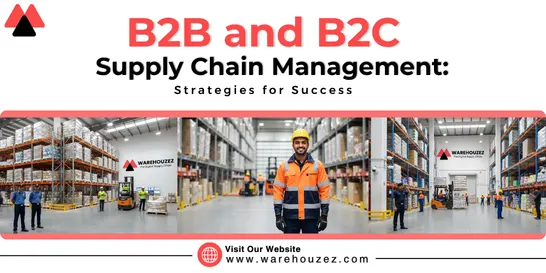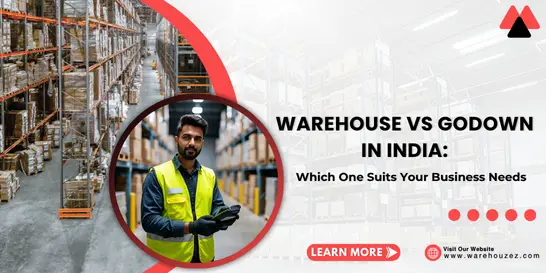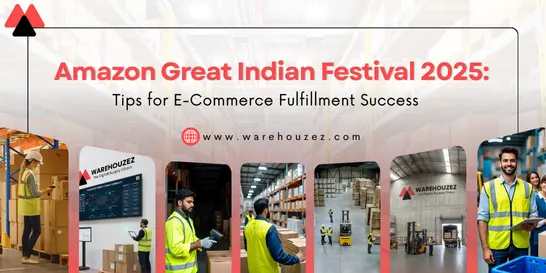E-Commerce Fulfillment in 2025: Trends and Strategies to Stay Ahead
E-Commerce Fulfillment in 2025: Trends and Strategies to Stay Ahead
The world of e-commerce is constantly changing. Consumers today want their orders delivered quicker, packed smarter, and handled with care. In 2025, these expectations are even higher than before.
Brands are now expected to offer next-day or even same-day delivery, personalized packaging, and hassle-free returns. At the same time, they must keep costs low and inventory well-managed. This shift is transforming how the entire order fulfillment process works.
Fulfillment is no longer just about storing and shipping products. It now includes smart warehousing, real-time inventory tracking, reverse logistics, and tech integration. In short, it’s indeed the heart of modern e-commerce success.
In this blog post, we will take you through the latest trends and strategies shaping e-commerce fulfillment in 2025, helping you stay ahead in a highly competitive market. So, let's dive in!
7 Fulfillment Trends Every E-Commerce Brand Should Know
E-commerce is in the middle of a major transformation. So, here are seven trends that every online business should keep an eye on:
1. The Rise of Micro-Fulfillment Centers
Brands are moving their inventory closer to customers by using micro-fulfillment centers. These small warehouses, often located in urban areas, reduce delivery time significantly. For example, grocery and fashion retailers now deliver within hours in top metro cities.
2. AI and Automation Are Transforming Warehousing
Warehouse Management Systems (WMS), Inventory Management Systems (IMS), and AI tools are streamlining processes. With these systems, you get live inventory updates, cut down on errors, and boost order accuracy. Robots and automated conveyors are also speeding up picking and packing.
3. Use of Real-Time Data for Smarter Decisions
E-commerce companies now rely on real-time data to manage inventory, predict demand, and optimize routes. Data helps in reducing delays, avoiding stockouts, and meeting delivery promises.
4. Omnichannel Fulfillment is the New Standard
Customers shop across platforms—apps, websites, and social media. Omnichannel fulfillment is an approach that makes sure every order—no matter where it comes from—is fulfilled accurately and quickly. It gives customers a seamless shopping experience.
5. Personalized Packaging to Boost Customer Experience
Customers expect more than just a plain brown box. Customized packaging boosts brand image and builds stronger customer relationships. Eco-friendly fillers and handwritten notes are small touches that make a big impact.
6. Reverse Logistics Becomes a Priority
Returns are no longer just a problem—they’re an opportunity. A smooth return process boosts customer trust. Many e-commerce companies now work with 3PL providers to handle reverse logistics efficiently.
7. Sustainability Is a Necessity in Fulfillment
Eco-conscious shopping is rising. Brands are switching to recyclable packaging, reducing returns, and using electric delivery vehicles. Green warehousing is gaining popularity, with a focus on solar energy and low-power lighting.
Strategies for Efficient E-Commerce Fulfillment
Knowing the trends is always the first step. The next is adopting the right strategies. Here’s exactly how you can future-proof your fulfillment process:
Partner with a Tech-Enabled 3PL Provider:-Outsourcing to a third-party logistics (3PL) provider is certainly a smart move. It saves cost, time, and effort. A reliable 3PL partner helps with secure storage, quick order fulfillment, and streamlined reverse logistics. Look for partners who use IMS/WMS for real-time tracking and have a network of warehouses across major cities.
Invest in Warehouse Automation:-Automated solutions like AI-powered systems, barcode scanners, RFID, and robotics speed up operations. They cut manual errors and improve order accuracy.
For example, a fashion retailer using automation in sorting and packing can ship 2x faster with fewer mistakes.
Decentralize Your Warehousing Network:-Set up multiple fulfillment centers in different regions. With decentralized warehousing, you can bring inventory closer to customers and cut delivery time.
It’s especially useful for quick commerce, where deliveries are expected within 10–30 minutes.
Improve Inventory Visibility:-Use IMS and WMS tools to get real-time inventory updates. This avoids overstocking or understocking.
Real-time insights help in predicting demand patterns and making smarter restocking decisions.
Focus on Packaging Efficiency:-Use lightweight, right-sized, and eco-friendly packaging. It reduces shipping costs and supports sustainability goals.
Plus, well-packaged items are less likely to get damaged during transit.
Optimize Last-Mile Delivery:-The last mile often remains the most costly as well as challenging part of the fulfillment process. To overcome this, businesses can use route optimization tools and partner with local courier companies.
Offering flexible delivery options like time slot selection also improves customer satisfaction while reducing failed delivery attempts.
Build a Flexible Fulfillment Strategy:-Market trends change fast. Build a strategy that allows scaling during peak seasons or flash sales. Partnering with a flexible 3PL provider helps manage such spikes easily.
Streamline Returns Process:-Returns are unavoidable in e-commerce. Make it easy and fast. Offer prepaid return labels, easy tracking, and timely refunds.
Efficient reverse logistics enhances brand reputation and keeps customers coming back.
Enhance Customer Communication:-Share order updates via app alerts, emails, or even text messages. Keep customers informed about delays, expected delivery times, and return statuses.Transparent communication builds trust.
Leverage Data Analytics for Continuous Improvement:-Using data analytics helps in tracking performance across all stages of fulfillment. From inventory turnover rates to order accuracy and delivery times, insights from data can reveal gaps and areas for improvement.
Brands that regularly analyze and refine their processes tend to stay ahead of customer expectations and industry changes.
Concluding Remarks: The Road Ahead
E-commerce fulfillment in 2025 is not just about storage and shipping. It’s about speed, tech, personalization, and sustainability. Businesses that understand these changing needs and act quickly will stay ahead.
Whether you're an online brand or a growing startup, now is the time to review your fulfillment strategy. Invest in automation, work with experienced 3PL providers, and use data to your advantage.
With the right steps, your e-commerce brand won’t just keep up—it will lead the way.
Need help with e-commerce fulfillment?
Partner with a reliable 3PL service provider like Warehouzez. We offer secure storage, tech-driven warehousing, real-time inventory updates, and quick delivery—all tailored to your business needs.
Let’s power your growth together.



